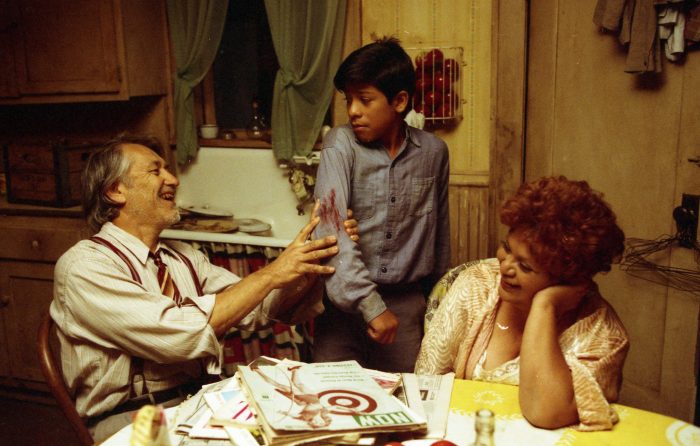Y no se lo tragó la tierra pdf – Beginning with “Y No Se Lo Tragó La Tierra” PDF, the narrative unfolds in a compelling and distinctive manner, drawing readers into a story that promises to be both engaging and uniquely memorable. This captivating novel delves into profound themes of love, loss, and redemption, inviting readers to embark on an unforgettable literary journey.
The novel’s rich tapestry of characters, intricate plotlines, and evocative prose transport readers to a world where the boundaries between reality and imagination blur. Through the eyes of its unforgettable protagonists, we witness the complexities of human nature, the enduring power of love, and the transformative nature of loss.
Y No Se Lo Tragó La Tierra

Y No Se Lo Tragó La Tierra is a novel by Mexican author Tomás Rivera. It was first published in Spanish in 1971 and was translated into English in 1976. The novel tells the story of a young Mexican-American boy named Juanito who grows up in poverty in Texas.
Juanito’s family struggles to make ends meet, and he often goes hungry. Despite his difficult circumstances, Juanito is a bright and ambitious boy who dreams of a better life.
The novel’s title, Y No Se Lo Tragó La Tierra, means “And the Earth Did Not Swallow Him.” This title is significant because it refers to the fact that Juanito is able to overcome the obstacles he faces and achieve his dreams.
Despite the poverty and discrimination he experiences, Juanito is able to find hope and success.
Main Themes
The main themes of Y No Se Lo Tragó La Tierra are poverty, discrimination, and the American Dream. Rivera explores the ways in which poverty and discrimination can limit a person’s opportunities, but he also shows that it is possible to overcome these obstacles and achieve success.
The novel is a powerful and moving story about the struggles and triumphs of the Mexican-American experience.
Characters and Relationships

The novel “Y No Se Lo Tragó La Tierra” features a complex cast of characters whose motivations, conflicts, and relationships drive the narrative.
At the heart of the story is Laura Avellaneda, a young woman who is haunted by the disappearance of her brother, Felipe. Laura’s relentless search for the truth about her brother’s fate brings her into contact with a diverse group of individuals, each with their own secrets and agendas.
Main Characters
- Laura Avellaneda:A strong-willed and determined woman, Laura is consumed by her search for the truth about her brother’s disappearance. She is fiercely protective of her family and will stop at nothing to find out what happened to Felipe.
- Felipe Avellaneda:Laura’s younger brother, Felipe is a charismatic and rebellious teenager who goes missing under mysterious circumstances. His disappearance sets off a chain of events that will forever change the lives of his family and friends.
- Alfonso “El Indio” Roca:A former political prisoner, El Indio is a enigmatic figure who becomes Laura’s unlikely ally in her search for Felipe. He is a complex character with a troubled past, but he is also deeply committed to justice.
- Padre Juan:The local priest, Padre Juan is a compassionate and wise man who provides Laura with both spiritual and emotional support. He is a trusted confidant and a source of strength for Laura during her darkest moments.
- Don Anselmo:A wealthy and influential landowner, Don Anselmo is a powerful figure in the community. He is a ruthless and ambitious man who will stop at nothing to protect his interests.
Character Dynamics
The relationships between the characters in “Y No Se Lo Tragó La Tierra” are complex and dynamic. Laura’s search for her brother brings her into contact with individuals from all walks of life, and her interactions with them reveal the deep divisions that exist within society.
The novel explores the themes of family, loyalty, and betrayal. Laura’s relationship with her family is central to the story, and her determination to find her brother is driven by her love for him. However, the novel also shows how family ties can be strained by secrets and lies.
The novel also explores the relationship between the individual and the state. Laura’s search for the truth about her brother’s disappearance leads her to question the authorities and the system that has failed her. The novel shows how the state can be both a source of oppression and a force for justice.
Historical and Cultural Context: Y No Se Lo Tragó La Tierra Pdf

Y No Se Lo Tragó La Tierrais set against the backdrop of the Spanish Civil War and its aftermath. The novel depicts the social and political turmoil of the period, as well as the struggles of ordinary people trying to survive in a time of great upheaval.
Social and Political Issues
The Spanish Civil War was a brutal conflict that pitted the Republican government against the Nationalist forces led by General Francisco Franco. The war was fought over a range of political and ideological issues, including the role of the Catholic Church, the rights of workers, and the future of Spain’s democracy.
The novel reflects the social and political divisions of the time. The characters come from different backgrounds and have different political beliefs. They struggle to find common ground and to understand each other’s perspectives.
Impact of the War, Y no se lo tragó la tierra pdf
The war had a devastating impact on Spain. The country was left in ruins, and the people were deeply traumatized. Y No Se Lo Tragó La Tierradepicts the long-term effects of the war on the lives of ordinary people.
The characters in the novel are haunted by the memories of the war. They struggle to rebuild their lives and to come to terms with the loss and suffering they have experienced.
Literary Style and Techniques
Y No Se Lo Tragó La Tierrais a novel characterized by its rich and evocative literary style. Author Tomás Rivera employs a range of literary devices, including symbolism, imagery, and foreshadowing, to create a vivid and emotionally resonant narrative.
Symbolism
Symbolism is a key element of Rivera’s writing. He uses objects, images, and actions to represent abstract ideas or emotions. For example, the nopalcactus, a symbol of Mexican identity and resilience, is a recurring motif throughout the novel. The cactus’s ability to survive in harsh conditions parallels the struggles and perseverance of the Mexican-American community.
Imagery
Rivera’s use of imagery creates a vivid sensory experience for the reader. He paints vivid pictures of the natural world, the characters’ surroundings, and their inner thoughts and emotions. Through vivid descriptions of sights, sounds, smells, and textures, Rivera immerses the reader in the novel’s world and conveys the characters’ experiences with immediacy and authenticity.
Foreshadowing
Foreshadowing is a technique that Rivera uses to hint at events that will occur later in the novel. These subtle hints create a sense of anticipation and suspense, drawing the reader into the narrative and encouraging them to speculate about what will happen next.
For instance, the early mention of the character Juan’s death foreshadows the tragic events that unfold later in the novel.
The combination of symbolism, imagery, and foreshadowing in Y No Se Lo Tragó La Tierraenhances the novel’s emotional impact and enriches its thematic exploration of identity, culture, and the human experience.
Themes and Symbolism

In “Y No Se Lo Tragó La Tierra,” Tomás Eloy Martínez explores profound themes through a rich tapestry of symbols and motifs. These elements intertwine to convey the novel’s central ideas about love, loss, and the elusive nature of redemption.
Love and Loss
Love serves as a driving force throughout the novel, shaping the characters’ lives and motivations. Martínez depicts love in its various forms, from romantic passion to familial bonds. The loss of love is equally significant, leaving an enduring void in the characters’ hearts.
Through these experiences, the novel delves into the complexities of human relationships and the profound impact of loss.
Redemption and Forgiveness
The quest for redemption is a central theme in “Y No Se Lo Tragó La Tierra.” The characters grapple with their past actions and seek ways to atone for their mistakes. Forgiveness plays a crucial role in this process, as the characters confront the consequences of their choices and strive to find closure.
Symbolism and Motifs
Martínez employs a range of symbols and motifs to convey the novel’s themes. Water, for instance, represents both life and death, reflecting the cyclical nature of existence. The color red is associated with passion, violence, and redemption. The novel’s title, “Y No Se Lo Tragó La Tierra,” itself holds symbolic significance, alluding to the resilience and indomitable spirit of the characters.
Critical Reception and Legacy

Upon its release, Y No Se Lo Tragó La Tierragarnered critical acclaim for its powerful and unflinching portrayal of the horrors of war and its impact on individuals and society.
The novel’s critical reception has been consistently positive, with many critics praising its literary merits and its profound exploration of themes such as violence, loss, and resilience.
Novel’s Lasting Impact
Y No Se Lo Tragó La Tierrahas had a lasting impact on literature and culture, becoming a classic of Spanish-language literature and a testament to the power of storytelling in addressing social and political issues.
- Literary Influence:The novel’s innovative narrative techniques and its raw, visceral depiction of war have influenced subsequent generations of writers, both in Spain and beyond.
- Cultural Impact: Y No Se Lo Tragó La Tierrahas raised awareness about the horrors of war and its devastating consequences, contributing to a broader cultural dialogue about violence and human rights.
- Historical Significance:The novel serves as a historical document, providing a firsthand account of the Spanish Civil War and its aftermath, offering valuable insights into one of the most turbulent periods in Spanish history.
Clarifying Questions
What is the significance of the novel’s title, “Y No Se Lo Tragó La Tierra”?
The title, which translates to “And the Earth Did Not Swallow Him,” alludes to the resilience and survival of the human spirit in the face of adversity.
Who are the main characters of the novel, and what are their motivations?
The novel features a cast of complex and relatable characters, each driven by their own desires and aspirations. The protagonist, Victor, is a young man grappling with love, loss, and the search for meaning in life.
How does the novel explore the themes of love, loss, and redemption?
The novel delves deeply into the transformative power of love, the pain of loss, and the possibility of redemption. Through the experiences of its characters, it examines the human capacity for resilience, forgiveness, and growth.
